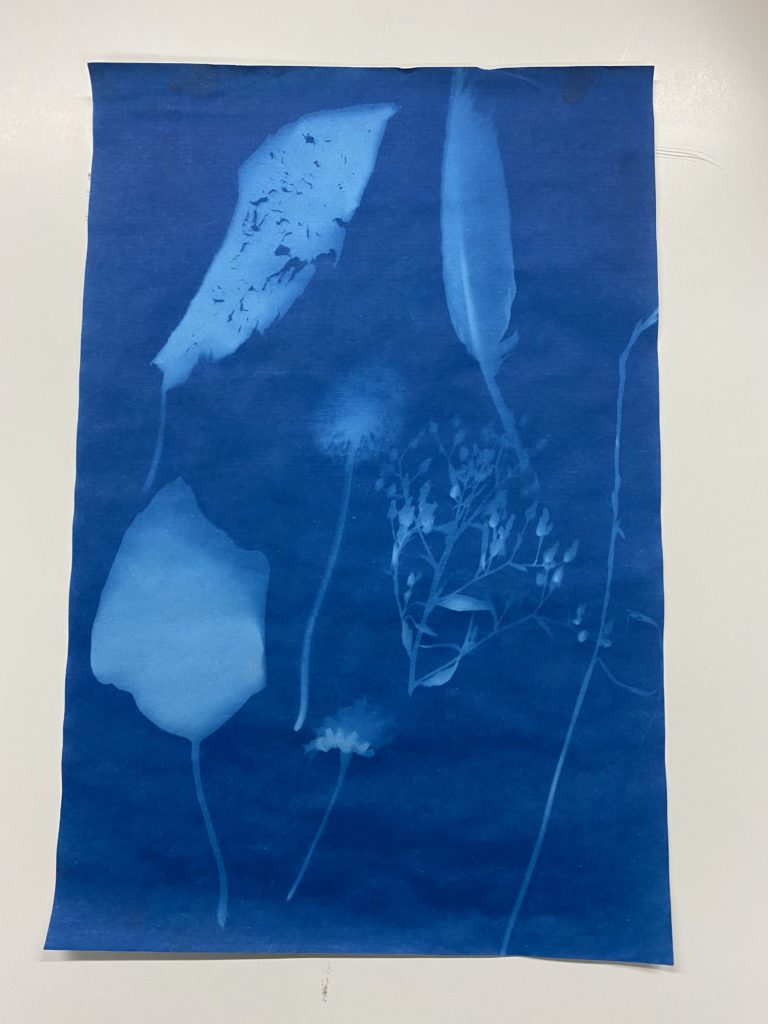Cyanotypes as a science
Cyanotypes were one of the earliest ways in which photographic processes were created. It was invented in 1842 by Sir John Herschel.

How are the images created?
Scientifically, it involves a paper which relies on the processing of two iron compounds where items can be placed on top of, which is then exposed to UV light for around 3-7 minutes. This then creates a monochromatic blue image which has to be left in water to stop it from processing any further once it has developed as well as you would like it to.
Cyanotypes as an art form
Cyanotypes were introduced to scientists who used it to create diagrams of plants, peoples bodies, etc. This then led to engineers/ architects who used it as a cost-effective and simple way to produce copies/drawings, which were used as we know them as “blueprints” therefore, in this case for various things such as buildings or machines.
Here is an example of which the prints would have looked like for scientists or engineers.

Photographers who have experienced with Cyanotypes
Anna Atkins–
Anna Atkins was an English botanical artist, collector and photographer during the 19th Century. Her cyanotypes consisted of botanical plants, which were highly detailed, this led to later help of illustrating the first book which included these images she created.


Christian Marclay –
Christian Marclay is a contemporary artist who explores visual arts, film and music culture. He created an exhibition of cyanotype photograms between September 8th to October 29th in 2011.
He created these through old cassette tapes which he disassembled. Here are some examples of him creating them and the final cyanotype:


My Cyanotype
Here is my attempt at a cyanotype which I created during our visit to Hamptonne.
To create it I gathered twigs, leaves, flowers, feathers, etc and put them on to the blue paper and left it in the sun for it to process. I then left them in water for 2-3 minutes which stops the sun from processing them anymore then let it dry in the sun.


Fantastic stuff, keep working hard!